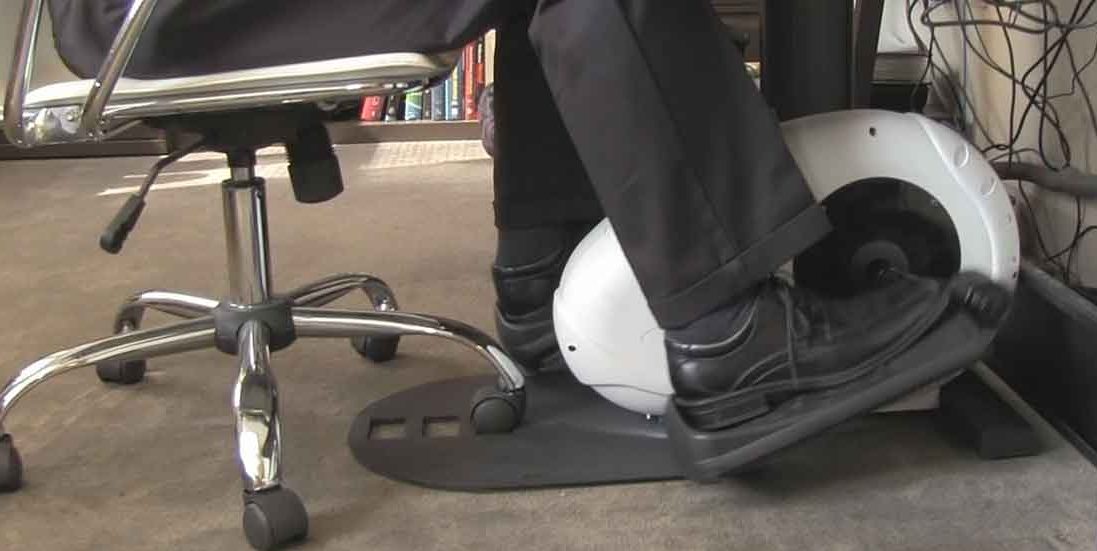New Ways to Exercise at Work

It’s not great to sit or stand all day, as many of us do. But there are other options to build movement into life outside the gym. Here’s what you should know.
If you spend most of your time sitting on the job, you could be raising your risk for many health problems — including several forms of cancer, heart disease, stroke, and type 2 diabetes.
About a third of the world’s population is considered inactive, according to World Health Organization estimates, raising their chance of dying by 20 to 30 percent.
YOU MIGHT ALSO LIKE: Managing Stress at Work
Overall, 3.2 million people die annually because of illnesses caused by physical inactivity.
Spending hours at a desk isn’t avoidable for many people, so they end up hoping they’ll have time and energy at the end of the day or wake up early the next day for a workout.
Do you have a remote or hybrid schedule? Things might be a bit easier, unless you’re fielding electronic communications round the clock.
Motivation is important. It may help to know that bouts of movement — typically 15 to 20 minutes at moderate intensity — can measurably boost your mood and cognitive performance.
When you’re bored or tired, you might start fantasizing about coffee or a carb-heavy snack. Try moving first. Even 10 minutes can make a difference.
Everyone can find work-arounds. Here are a few:
- Sit on a stability ball rather than a desk chair. You’ll be working your abdominal muscles.
- Pace inside or take a walk outside while you talk on the phone.
- For zoom meetings in which you can turn off the video, use headphones and stand and do exercises like squats and lunges. If you’re sitting in an office chair, try swiveling to each side to exercise your obliques. If you’re on a cellphone call, pace. The basic concept is to move as much as you can, especially when you’re losing focus.
- If you normally sit, stand up for a few minutes every hour and drink from a water bottle. That will help you stay hydrated as well. Do a shoulder roll.
- As with standing to drink, build habits that link movement to ordinary activities. If you use a microwave to heat coffee, lunch, or a snack, jog in place while you’re waiting. You can even do so in the office, if no one is around, or if you have friendly coworkers. You can be the team’s official “Microwave Jogger.”
- Invest in an adjustable desk for a home office. Research suggests that a sit-stand desk, which allows you to move a tray up and down, can relieve shoulder and neck discomfort. It may boost your mood as well. But the goal isn’t to stand all day long. People who routinely stand for hours are more likely to develop back pain and heart disease. Movement is the cure. So make sure your desk is easy to move up and down and works for your location and height. You could also try switching between two stations in your home, one for sitting and another with a laptop where you can stand.
- If you are considering a home treadmill, you can get one that can be paired with a desk or used with a tray for reading or attending a video meeting.
Updated:
May 26, 2023
Reviewed By:
Janet O’Dell, RN